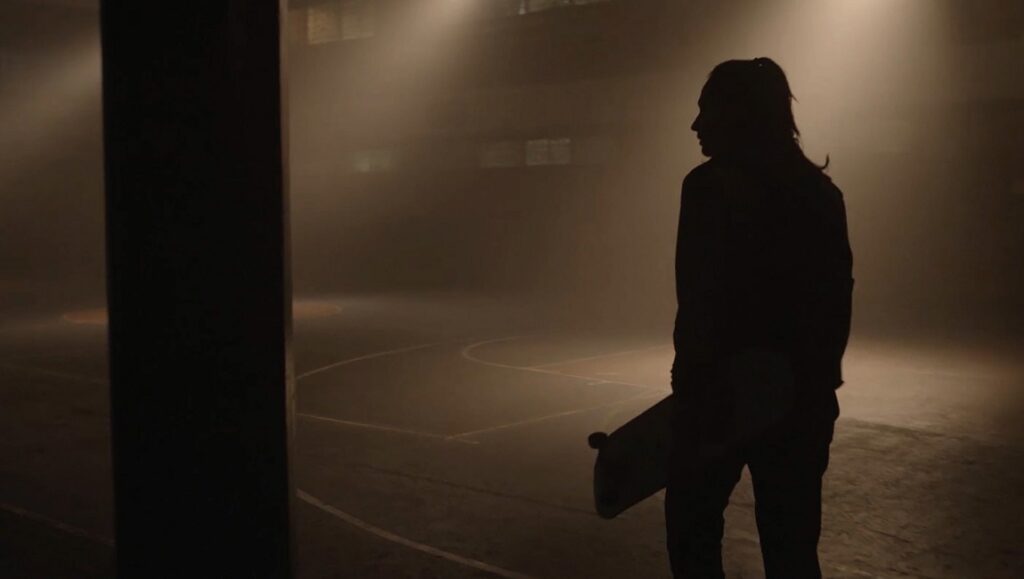Virus: 32 isn’t reinventing the zombie film wheel, but its careful attention to craft and precise formalism mark this effort near the head of the class.
At this point, there’s not much left to do with the zombie apocalypse genre. It’s all well-worn material now, its various tropes and metaphorical elasticity totally subsumed into the culture at large through a never-ending parade of film and television projects. A zeitgeist-y inclined critic a la J. Hoberman might even be tempted to equate the decline of the genre with the impending series finale of the once-beloved, now out of favor The Walking Dead — its decade-long run roughly mapping onto a rise-and-fall narrative of the zombie’s pop-culture dominance — and an overall decline in Americans’ life expectancy. After all, who needs a fictional Armageddon when it already feels like we’re living through it for real? But, like the western and action genres that preceded it, there’s always room for a hungry (no pun intended) filmmaker to elevate and reinvigorate the familiar through sheer gusto. So while there might not be any surprises hiding in the new thriller Virus: 32, it’s so well-made you probably won’t care.
Here, director and co-writer Gustavo Hernandez is working from a 28 Days Later template instead of the original Romero flavor, meaning that the violent masses of infected are very fast and very agile. The film begins with a slow pan across an inauspicious living room; a woman busies herself in the kitchen while the camera catches a man crushing a bird with his bare hands. The camera then plunges through a window down to the street below, introducing us to Luis (Daniel Hendler) and his young daughter Tata (Pilar Garcia). Luis is dropping Tata off with her mother, his estranged wife Iris (Paula Silva), and it’s quickly revealed that Iris is a mess. Her apartment is strewn with empty beer and liquor bottles, and a bong features prominently on the kitchen table. Reluctantly, Iris decides to bring Tata with her to her job, a security guard gig at a cavernous, abandoned old sports club. A brief tour of the building reveals what seems like miles of dark corridors, cramped locker rooms, a huge swimming pool, and basketball courts, all watched over by a phalanx of security cameras. It’s an ideal setting for a survival horror story, and Hernandez and cinematographer Fermin Torres utilize it for all it’s worth. Thankfully there’s not much more story than this; simplicity here is a virtue. Iris and Tata are separated, and mother must summon immense inner strength to get her daughter back.
A new character gets introduced about halfway through the film, a familiar but well executed bit of people-are-the-real-monsters shoe leather, but otherwise Virus: 32 operates as a series of escalating set pieces that ratchet up the tension with a thrillingly precise formalism. It’s undeniably refreshing to watch a film that has actually been directed, thought through in largely visual terms. There’s a phenomenal sequence set in the aforementioned locker room, as the serpentine camera tracks and dollies along with Iris in a long, unbroken shot that sees her evading several of the infected. The camera movements aren’t just technical flex, however, but instead work in tandem with Iris’ point of view, limiting what we see to her field of vision. Likewise, Hernandez uses the banks of security cam monitors to divvy up the screen, revealing information to the viewer but not to the characters. It’s superbly choreographed stuff, constantly realigning what we think we know about who is where, and when. Once the space actually opens up, as when Iris and Tata have to sprint across the wide-open expanse of the basketball court, Hernandez switches from off-screen suggestion to a very visceral invasion as dozens and dozens of infected flood into the room. There are a couple of fake-outs at the end of the film that rankle a bit, but Hernandez ultimately succeeds in that most simple of tasks — creating likable characters that we want to see survive. It would seem an easy enough task, and yet so many low-budget (and big-, for that matter) pictures can’t manage even this most basic of storytelling conventions. No one is reinventing the wheel here, but the filmmakers are instead content to simply tell their story well, with maximum clarity and careful craft. Why can’t they all be like this?
You can stream Gustavo Hernandez’s Virus: 32 on Shudder beginning on April 21.


Comments are closed.